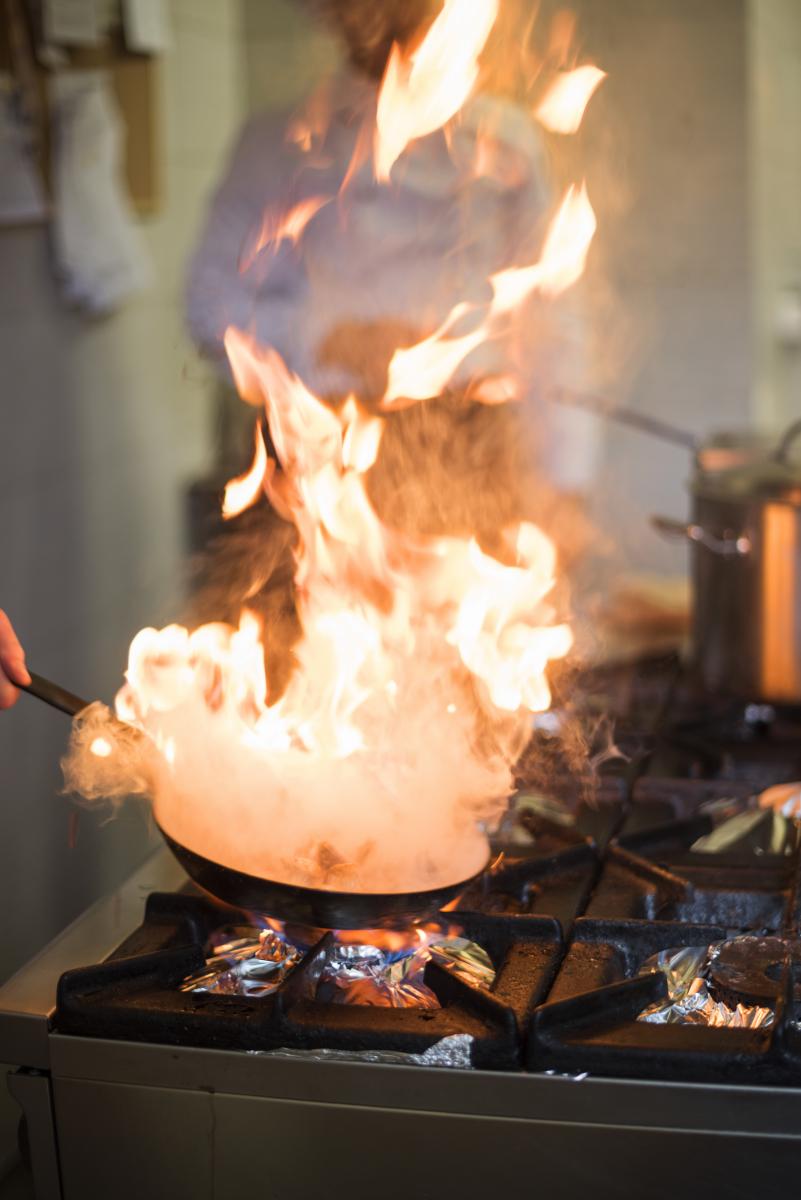An overheating commercial kitchen is no fun for anybody — chefs, kitchen staff, waiters and customers all suffer from the effects. So what’s causing it and how can you fix it? This week’s post will help you identify the culprits and tackle the problem.
One of the most obvious impacts of an overheating kitchen is uncomfortable staff and customers – chefs are perspiring and there’s a pervasive smell of dirty grease. Clearly, this is going to drive customers away in droves and suggests that the café or restaurant is a far cry from best practice health and safety, let alone raising serious questions about the quality of the food!
When a kitchen is overheating, the number one cause is a dirty or malfunctioning kitchen hood exhaust system. So, if you walk into a restaurant and smell grease, you can justifiably assume that someone is not doing their job properly.
According to Sean McGowan, the need for cleaning and maintaining kitchen exhaust systems is “a subject that kitchen owners don’t fully appreciate”, and yet the systems play such an enormously important role in commercial kitchens. As McGowan says, “Not only do they remove heat, odours and grease from the kitchen environment. They also remove some very serious gases, including carbon dioxide, carbon monoxide and nitrogen dioxide; which may be produced while the kitchen cooking equipment is in use.”

Ensuring that the range hood is the right size for the kitchen is also crucial. “Undersized range hoods inevitably lead to positive pressure, which manifests itself into smoke and effluent from cooking remaining in the kitchen, making it both a hot and uncomfortable environment working environment. It can also lead to odours entering the restaurant dining space,” says McGowan.
While a dirty or inadequate exhaust system can cause overheating and a build-up of smells, a ‘negative pressure kitchen’ is another significant contributor. So what causes negative pressure? The answer lies in make-up air, or, more correctly, the lack of it.
A make-up air unit or system draws outside air into the building to balance the polluted air that is removed by the exhaust system. If the make-up air system is not functioning properly and this balance is upset — in other words, more air is being exhausted than is added — a negative pressure kitchen is the result.
This has a dual impact on the kitchen exhaust system:
-
- The exhaust system does not function efficiently, forcing the HVAC system to run continually to maintain a comfortable environment and;
- Grease builds up on the filters and in the ductwork at a faster rate, adding to increased building temperatures and fire risk, and requiring a more frequent cleaning and maintenance regime.
So, how do you avoid or fix a negative pressure kitchen?
- First and foremost, ensure your kitchen meets OH&S legislation regarding the provision of natural or mechanical ventilation and that the make up air system is working properly. The aim is to have an equal balance of air coming into the kitchen and exhaust being removed.
- Next, given there is a direct relationship between the efficiency of the kitchen exhaust and make-up air systems, check that the size of the exhaust hood/s and ductwork are adequate to the quantity of convective heat being produced. Kitchens often expand over time to meet demand, leaving an undersized exhaust system to struggle with an increased volume of exhaust.
- Finally, maintain a best practice filter and ductwork cleaning schedule in line with the amount and kind of food being cooked. Not only does this significantly reduce your fire risk, you’ll be providing a comfortable workplace for employees and a safe and pleasant environment for your customers.
If you’ve enjoyed this blog article and would like to find others similar to it, you can do so by clicking on the link below.
